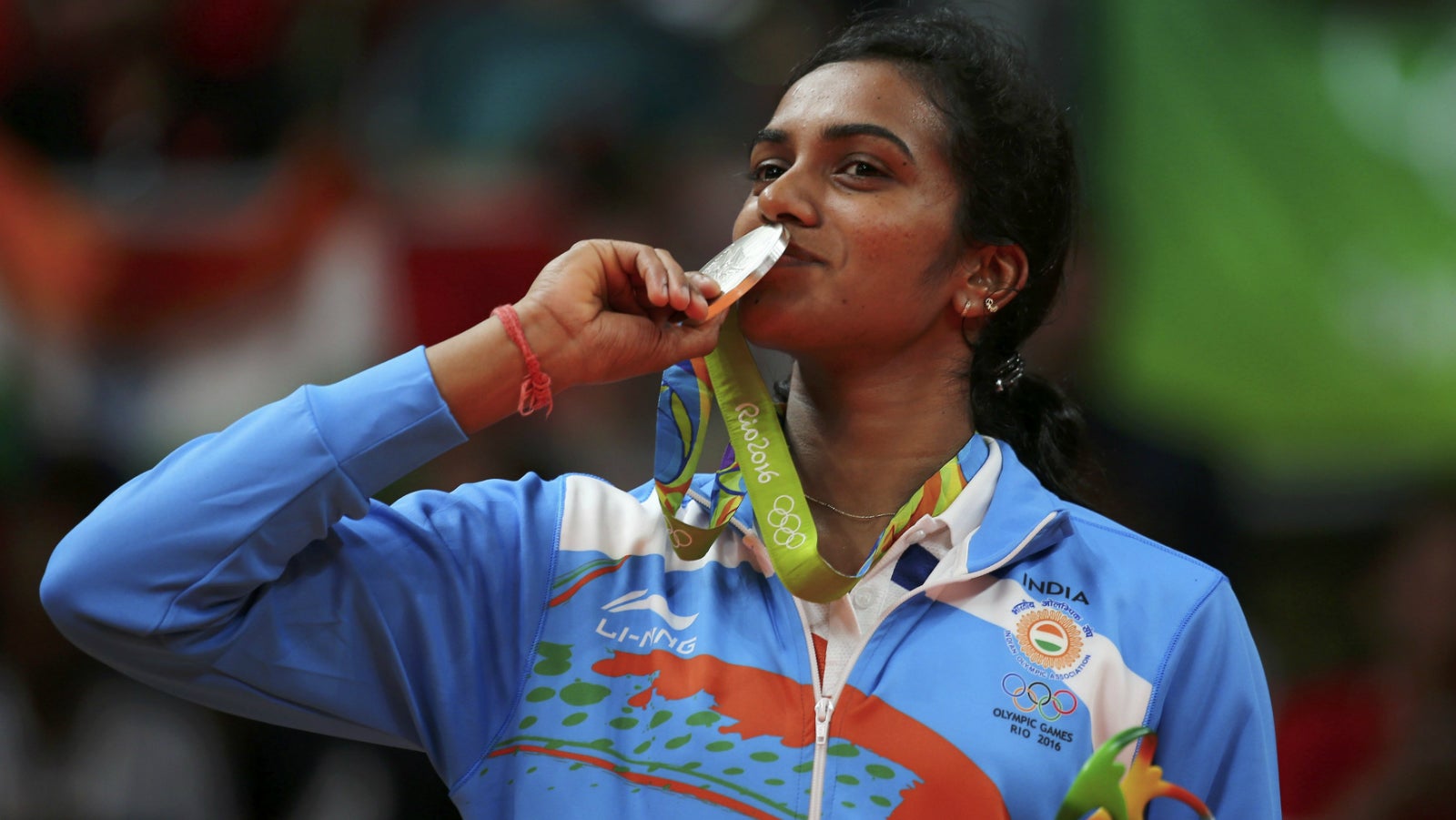India has won just 28 Olympic medals over a century. It now aims to win 50 in just 8 years
India has come up with a grand plan to win 50 medals at the 2024 Olympics.


India has come up with a grand plan to win 50 medals at the 2024 Olympics.
So far, India has only won 28 medals in the 24 Olympic games that it has participated in since 1900. Of these, nine were gold, six silver, and 11 were bronze. This year, India, with 1.3 billion people, only managed to win two medals—none of them gold—at the Rio games.
Chastened by such a dismal showing, the Narendra Modi government has roped in the country’s premiere state-run think-tank, the NITI Aayog, to sort out India’s sporting mess.
“The second-most populous nation in the world has the lowest rank in terms of medals per capita,” NITI Aayog, led by Columbia University economist Arvind Panagariya, said in a report (pdf). “It is disappointing that a country that has world-class talent in various disciplines has not been able to produce champions in the area of sports.”
To fix the situation, the policy think-tank has released a 20 point agenda that it says will help India win 50 medals at the Olympics in 2024. The suggestions, involving both short and long-term plans, include identifying 10 priority sports, training sportspersons from a young age, bringing in international coaches, and spending more on sports infrastructure.
The report comes barely a month after prime minister Modi set up a task force to prepare a comprehensive action plan for Indian sportspersons, keeping the next three Olympic Games in mind.
Here are some of the key suggestions made by NITI Aayog:
Priority sports
Taking a cue from countries such as Kenya and Jamaica, which participate in only two Olympic sports (pdf), the think-tank wants to prioritise 10 sports and “develop an outcome-oriented action plan.”
“The 10 priority sports should be ones with high winning potential as well as those in which India has won medals in the past,” the report said. “It (the plan) should include targets in the next four-year cycle, training, and coaching schedules to achieve those targets, medical, psychological, and drug test schedules, institutional and private support systems for all categories of players of each sport.”
Catch them young
India currently doesn’t have a system to identify young talent.
“Presently, the only provision India has to identify young talent is through the Sports Authority of India’s (SAI) National Sports Talent Contest (NSTC) Scheme,” the report said. “The NSTC scheme scouts sports talent in the age group of 8-14 years from schools and nurtures them into future medal hopes by providing scientific training.” In contrast, China and Germany begin the scouting and development of individual talent among children that are as young as five years old (pdf).
The think-tank also wants India to give ”equal priority” to sports as academics.
World-class coaches
NITI Aayog believes India must invest heavily in finding the right coaches.
“With the promotion of sports in India, there would be a growing demand for coaches and trainers,” the report said. ”The gap has to be filled by hiring more number of national and international coaches per sport, per training centre and per location.” The authority wants a “well-defined and transparent selection criteria” in place for this, “based on talent, qualification, experience, and proven track record.”
Insurance and infrastructure
The think-tank has suggested that the government set up a sports injury insurance scheme that will provide a cover against serious injuries. “The insurance scheme should be tailored as per the needs of each sports discipline and should cover players from different categories,” the report said.
In addition, considering the massive shortage of sports infrastructure, it has suggested the ramping up of facilities. “There is a scarcity of sports academies that target individual sports disciplines in India,” the report said.
India currently has a few of these academies, such as the Gopichand Badminton Academy, Bhiwani Boxing Club, Bhaichung Bhutia Football Schools, Tata Football Schools, Prakash Padukone Badminton Academy, Mahesh Bhupathi Tennis Academy, and the Tata Archery Academy. But these won’t be enough to meet the growing needs.
“Steps that can be taken to create more academies include facilitating the availability of land to retired sportspersons and subsidies to procure sporting equipment to world class sportspersons to start their regional academies,” the report said.
A culture of sports, with enough funds
India doesn’t boast of a great sporting tradition.
Much of that is because the public at large believes that sports as a profession offers low remuneration, and that chances of failure are high. To fix that, NITI Ayog wants the government to begin a ”nationwide campaign” to raise awareness on sports, “especially India’s representation in Olympics and their success.”
It also wants the SAI to sign a fixed four-year contract with sportspersons for consistent funding allocation for each year. Besides, “it is recommended that a separate arm under the SAI be created which should be responsible for bidding and staging of major sporting events in India,” the report said.
With these suggestions, the government has demonstrated its keenness to increase India’s sporting profile globally. However, what these recommendations will lead to in the foreseeable future is another thing altogether.